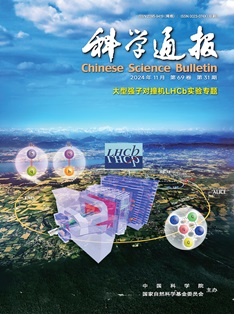The wide-field multiband imaging and slitless spectroscopy survey to be carried out by the Survey Space Telescope of China Manned Space Program
引用次数: 20
Abstract
The 2 m-aperture Survey Space Telescope (also known as the China Space Station Telescope, CSST) is a major science project of China Manned Space Program. It is expected to start science operations around 2024 and has a nominal mission lifetime of 10 years. During observations, CSST will fly independently in the same orbit as the space station while maintaining a large distance apart. It can dock with the space station for refueling and servicing as scheduled or as needed. With a Cook-type three-mirror anastigmat design, CSST can achieve superior image quality within a large field of view (FoV), which gives it an advantage for survey observations. Being an off-axis telescope without any obstruction, its point spread function (PSF) is not affected by diffraction of mirror support structures and is thus helpful for weak-lensing shear measurements. The radius encircling 80% energy of the PSF within CSST’s central 1.1 square degrees of FoV is required to be no more than 0.15″, including all wavefront errors in the optics and instruments and dynamical effects such as the telescope’s attitude control and vibration. CSSTwill be launched with 5 first-generation instruments including a survey camera, a terahertz receiver, a multichannel imager, an integral field spectrograph, and a cool planet imaging coronagraph. The survey camera is equipped with 30 9k×9k detectors for science observations, each with a filter or grating mounted above, a defocused 9k×9k detector for flux calibration in r band, 8 640×512 near-infrared detectors, fine guide sensors, and wavefront sensors. The primary task of CSST is to carry out a high-resolution large-area multiband imaging and slitless中国载人航天工程巡天望远镜将进行的宽视场多波段成像和无狭缝光谱巡天
2米口径巡天望远镜(又称中国空间站望远镜,CSST)是中国载人航天工程的重大科学项目。它预计将于2024年左右开始科学运行,标称任务寿命为10年。在观测过程中,CSST将在与空间站相同的轨道上独立飞行,同时保持较大的距离。它可以与空间站对接,按计划或根据需要进行加油和维修。通过库克型三镜消隐器设计,CSST可以在大视场(FoV)内实现卓越的图像质量,这使其在勘测观测中具有优势。作为一台没有任何障碍的离轴望远镜,它的点扩散函数(PSF)不受镜支撑结构衍射的影响,因此有助于弱透镜剪切测量。CSST中心1.1平方度FoV内环绕PSF 80%能量的半径要求不超过0.15〃,包括光学和仪器中的所有波前误差以及望远镜的姿态控制和振动等动力学影响。CSSTwit将搭载5台第一代仪器,包括一台勘测相机、一台太赫兹接收器、一台多通道成像仪、一台积分场摄谱仪和一台冷行星成像日冕仪。测量相机配备30个9k×9k探测器用于科学观测,每个探测器上方安装一个滤波器或光栅,一个用于r波段通量校准的散焦9k×9k探测器,8个640×512近红外探测器、精细引导传感器和波前传感器。CSST的主要任务是实现高分辨率的大面积多频带成像和无狭缝成像
本文章由计算机程序翻译,如有差异,请以英文原文为准。
求助全文
约1分钟内获得全文
求助全文
来源期刊

Chinese Science Bulletin
综合性期刊-综合性期刊
自引率
0.00%
发文量
31457
审稿时长
2.6 months
期刊介绍:
Chinese Science Bulletin (CSB) was established in 1950 and is currently published three issues every month. It is indexed by Ei Compendex, ESCI (Emerging Sources Citation Index)and Chinese Science Citation Database (CSCD),etc. CSB is a multidisciplinary academic journal supervised by the Chinese Academy of Sciences (CAS) and co-sponsored by the CAS and National Natural Science Foundation of China (NSFC). CSB is committed to rapidly reporting the most advanced developments in natural sciences and engineering and to serving the scientific community with valuable insights into upcoming trends.
 求助内容:
求助内容: 应助结果提醒方式:
应助结果提醒方式:


